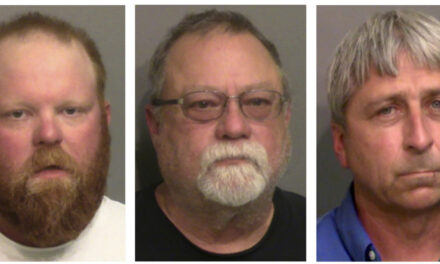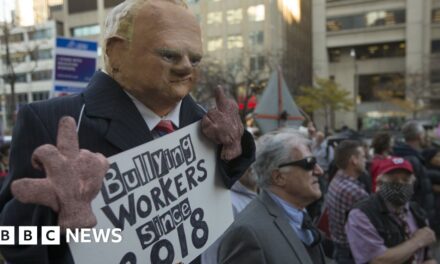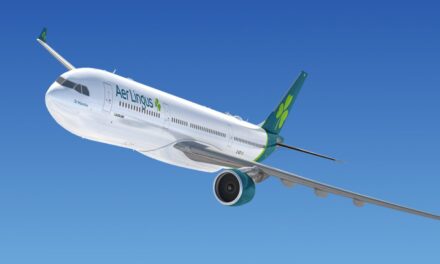
After Two Years, Australia to Reopen Borders to Vaccinated Visitors

Image

Nearly two years after Australia slammed its borders shut to almost all noncitizens, the country will reopen this month to international tourists who have been fully vaccinated against the coronavirus, Prime Minister Scott Morrison announced on Monday.
“If you’re double vaccinated, we look forward to welcoming you back to Australia,” Mr. Morrison said at a news conference.
Vaccinated tourists, business travelers and all other visa holders can enter Australia starting on Feb. 21, Karen Andrews, the country’s home affairs minister, said on Monday. Visa holders who are not fully vaccinated will face quarantine requirements and need a travel exemption, she added.
The decision will not open all of Australia to foreign visitors, as individual states control their own borders, and can impose flight caps or require quarantines.
Australia’s two most populous states, New South Wales and Victoria, have no quarantine requirement for incoming vaccinated travelers. But Western Australia, which has experienced fewer cases of the virus than any other Australian state, will continue to tightly control who can enter, including from elsewhere in Australia.
Australia has moved from a “Covid Zero” approach, in which it attempted to contact-trace and stamp out any outbreak of the virus, to one in which the country is “living with the virus.” The more contagious Omicron variant has swept across New South Wales, Queensland and Victoria in the past two months, resulting in an explosion in case numbers, but the wave has been subsiding.
In March 2020, Australia announced that it would close its borders to all noncitizens and nonresidents and prevent citizens already inside the country from leaving. Australians abroad who sought to go home faced a mandatory two-week hotel quarantine on arrival. For many, limited hotel spaces and frequent flight cancellations made it all but impossible to return.
Since late last year, the country has been steadily reopening its borders, with citizens permitted to enter New South Wales and Victoria without undergoing hotel quarantine. Australia is now allowing students and some laborers to enter, and “travel corridors” with countries like New Zealand, Singapore and Japan — all of which, like Australia, have high vaccination rates — have allowed in a trickle of tourists and others.
The country’s border policies were in the spotlight in January when the tennis player Novak Djokovic, who was not vaccinated against the coronavirus, had his visa canceled by the Australian government.
Speaking about the vaccination requirement at his news conference, Mr. Morrison appeared to refer to the tennis star: “Events earlier in the year should have sent a very clear message to everyone around the world that that is the requirement to enter into Australia,” he said.
Video

OTTAWA — More than a week after a trucker-led protest against pandemic restrictions effectively shut down the city center in Canada’s capital, the mayor has declared a state of emergency.
The city of Ottawa said in a statement that the move on Sunday by Jim Watson, the mayor, “reflects the serious danger and threat to the safety and security of residents posed by the ongoing demonstrations and highlights the need for support from other jurisdictions and levels of government.”
The measure is, however, largely symbolic. It did not give the city’s police any additional power to move several hundred trucks and personal vehicles off the streets near Parliament, and provincial regulations limit the city to acting within its current laws when dealing with the demonstration.
Protesters against pandemic restrictions took to the streets in Ottawa and other cities across Canada on Saturday for the second weekend in a row. The demonstrations began with truckers critical of vaccine mandates but have grown to include a range of other political causes, including opposition to Prime Minister Justin Trudeau.
In Ottawa on Saturday, despite frigid temperatures, a band performed on the street in front of Parliament Hill underneath a Canadian flag dangling from a large construction crane. Nearby, several inflatable bouncy castles were set up, and makeshift canteens throughout downtown dispensed food. At a municipal baseball stadium parking lot that truckers were using for staging and camping, three saunas were brought in.
On the streets, many people walking to the protest greeted one another with raised fists and shouts of “freedom.”
While the demonstrations have not devolved into serious physical violence, they have nevertheless paralyzed Ottawa’s downtown core with traffic, noise and repeated complaints of harassment.
About 200 to 250 trucks remained downtown from a demonstration on Jan. 29, their drivers frequently honking their air horns. Supporters have been delivering diesel fuel to the truckers, who have stacked firewood in parks and built a small wooden canteen building next to a canal that serves as a popular skating rink in the winter.
On Sunday, the Ottawa Police said on Twitter that they had begun arresting people bringing jerrycans of fuel to truckers.
Image
Vincent Zhou, an American figure skater and two-time Olympian who was expected to compete in the men’s short competition on Tuesday, tested positive for the coronavirus on Monday, putting his ability to compete in jeopardy.
Zhou is undergoing further tests to confirm the positive result. If he tests negative, he will be allowed to compete.
Athletes and other attendees inside Beijing’s “closed loop,” a set of designated venues and hotels that visitors cannot leave, are required to undergo a polymerase chain reaction, or P.C.R., test every day. Of the 74,603 tests taken in the closed loop on Sunday, 13 people tested positive, including five athletes and team officials.
Some athletes arriving in Beijing have initially tested positive, forcing them to isolate in hotel rooms, but later produced negative tests that allowed them to compete. That group includes Elana Meyers Taylor, an American bobsledder who had been picked as the flag-bearer at the opening ceremony; and Tahli Gill, an Australian curler who rotated between negative and positive tests after contracting the virus in December.
Thus far, the Olympics have successfully avoided a nightmare-scenario outbreak. A consistent trend has developed in the run-up to the Games and the first week of competition: A relatively small number of people have tested positive and been forced to isolate after arriving at the Beijing airport, while a tiny fraction of the overall Olympic population have been positive.
All international arrivals are tested at the Beijing airport and then isolate in hotel rooms until the results come back a few hours later. On Sunday, 11 of 142 people arriving in Beijing tested positive, including seven athletes and team officials, Olympic officials said.
Those who test negative are allowed to move freely throughout the Games’ closed loop. Those who test positive but do not require medical treatment must isolate in hotel rooms. They are allowed to return to action only after registering two negative tests.
Source: https://www.nytimes.com/live/2022/02/07/world/covid-test-vaccine-cases


















